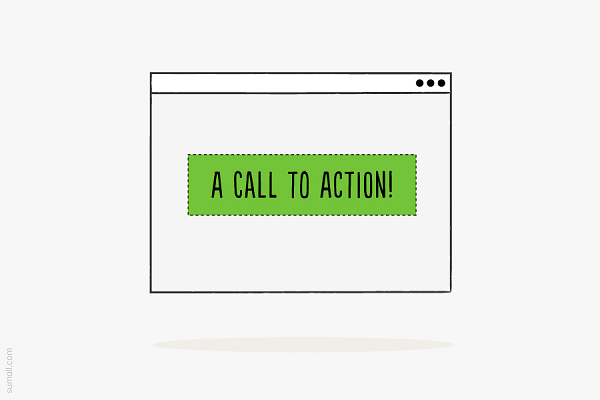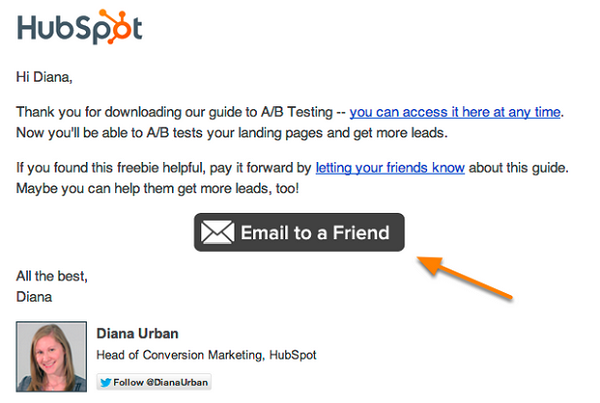Steph W. from SEOPressor


...help you check your website and tell you exactly how to rank higher?


83
score %
SEO Score

Found us from search engine?
We rank high, you can too.
SEOPressor helps you to optimize your on-page SEO for higher & improved search ranking.
By vivian on May 5, 2015

When you’re trying to figure out more traffic generation tactics for your website, have you considered encouraging human interaction?
Every time visitors take a small step towards buying, they become more likely to take the next step. With that in mind, here are 6 ways to improve your website’s traffic by using human interaction:
Websites like Udemy offers a place for people to get lessons and instructions on various matters. But if you have the entire course on those sites, people have no incentive to visit you.
Instead, create a two-part instructional series on your products and only place the first one on these educational sites. At the end of that part, tell the viewers that part two is available on your site and can be accessed for free by following the link provided.
The “free” aspect of this is important – users are far more willing to come to your website if it won’t cost them anything to continue the lesson, and your goal is to get them to arrive, not make a sale. Your goal here is a focus on generating traffic, and that should be the overriding consideration.
Why is Udemy great? Purely because Udemy has:
.
.

The phrase “clickbait” has a negative connotation when it comes to news, but if you’re thinking about more traffic generation tactics to your blog posts, this could be the solution you’ve been searching for.
The name came about because of the tendency of some blogs to make particularly intriguing headlines, then deliver up an article that was at least loosely related to the headline.
The success of this method was one of the major drivers behind the spread of the term.
Now, you shouldn’t lie to your readers – nothing will drive them away faster than promising one thing and then refusing to deliver it. However, you can focus on presenting your blogs and articles in the most interesting way possible.
Clickbait articles work particularly well with blogs where you’re controversial and decide to take a stand on a particular subject. In this case, you’re boldly proclaiming your opinion for all the world to see.
Remember: Being controversial is fine, but don’t descend to insults and personal attacks. The more well-reasoned your articles are, the better the responses will be.
[Tweet “Use Clickbait Titles to boost your traffic by 30%”]

In traditional inbound marketing, the Call to Action goes at the very end of your article. But what if you’re worried about people getting that far once you’ve figured that your traffic generation tactics work in the first place?
You can hack this process by inserting social media buttons – typically for Twitter – at the end of each section.
This makes it easier for users to share content they find valuable, and any of their friends who come in to examine it will go back and read the entire article if they find it interesting enough. You can download the plugin here.
This style of marketing is all about turning a basic act (reading blogs) into a social experience. “Experience” is the keyword here, because anyone who shares the content with their friends is probably going to finish reading so the two of them can talk about it later.
If you’ve been following our posts closely, you may have already noticed that this sounds a lot like turning readers into promoters – and that’s exactly right.
You’re using marketing techniques to get people to promote you even before they buy your product, and once they’ve told their friends they like you, they’re much more likely to follow through and ultimately buy something. If you’re looking for how to generate traffic in a way that encourages conversions, this is it.
This style of marketing works particularly well with blog posts that are divided into sections, as all sensible posts will be.
This is an example:
[Tweet “Creating a Twitter’s Call To Action in blog can increase your tweet by 10%”]
One of the best ways for readers to get involved is answering the questions other people have on websites like Quora and Yahoo. This is a type of positive reinforcement where your readers are offered the chance to demonstrate their expertise in the subject and help others – and most people enjoy the feeling of helping someone else.
This is another multi-level marketing strategy focused around traffic generation tactics.
First, users who answer questions are more likely to be loyal to their brand. Every post they make in support of your products also reinforces their senses that your products are valuable, and these are the type of customers who become repeat customers over time.
Second, this provides a positive first experience to the person having their question answered. They’ll perceive that your existing customers are friendly, helpful, and intelligent – and if it will solve a problem they’re having, they want to be a part of that.
Third, the answers provided will give a direct link back to your website, earning some links in a natural, organic way.
You can also answer questions yourself, but be sure to avoid sounding like a businessman – people, in general, are more likely to trust other users than someone they suspect of being a marketer since the motives of businessmen are inherently suspicious.

Email remains one of the most powerful forces in marketing, so it shouldn’t be a surprise that you’ll want people to interact with it.
As far as these messages go, one of the worst things you can do is forget to add a good Call to Action at the end. Why?
Because they’re also reading other messages. If people move on to the next item in their inbox, they may ultimately forget about coming back to interact with yours.
The solution to this is making an email that’s worth acting on, and the best way of doing that is providing something users can do immediately. If you’re not encouraging them to buy a product right now, you can encourage them to share the email’s content (or at least a version of the content) on social media.
This is particularly valuable if you’re sending entertaining content or special bargains that they (and their friends) can all take advantage of.
The true goal, however, is human interaction – get the reader involved, and they’ll move closer to becoming a customer.

Your HTML code should look like this:
<a href="mailto:?subject=Your Subject Line Goes Here&body=Enter the content you want to appear in the body of the email. Remember to include a link to your offer. http://yoursite.com/offer"><img src="http://yoursite.com/email-share-image-file.png"></a>
[Tweet “Encourage your readers to share great content in Email to grow your email list”]
StumbleUpon is a popular form of social media where users can share content they find interesting and allow others to stumble across it – hence the name.
The important thing is that it’s better at getting you traffic than sites like Reddit and Digg. SU users actively want to find content on a topic, so they’re far more likely to click on things when your content is shared, especially if you can get a significant number of users to post it and reinforce the idea that your content is worth reading.
Users who are actively studying a given subject are much better leads than random users you try to reach online.
You can even take a multi-level approach to this, encouraging readers to stumble across the lessons we talked about in part one. Either way, the idea is to encourage readers to take one step at a time towards becoming your customers.

That is all on some of the traffic generation tactics.I hope these will give you some ideas on how you can further maximize your traffic. Let me know what you think in the comments section or if there’s anything else you think I might have missed.
Related articles you might like:
[This blog post was originally written and published by Brian Chang on April 30, 2015. It is most recently updated by Howard Go on Jun 02, 2020]
Updated: 21 December 2025


Save thousands of dollars (it’s 100x cheaper)

Zero risk of Google penalty (it’s Google-approved)

Boost your rankings (proven by case studies)
Rank High With This Link Strategy
Precise, Simplified, Fast Internal Linking.
